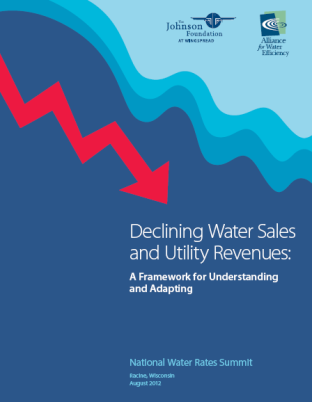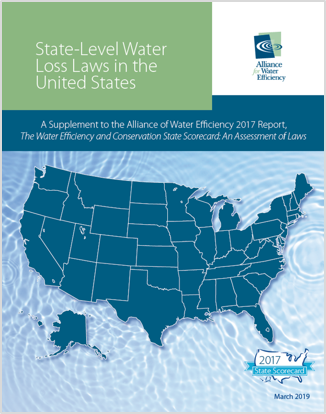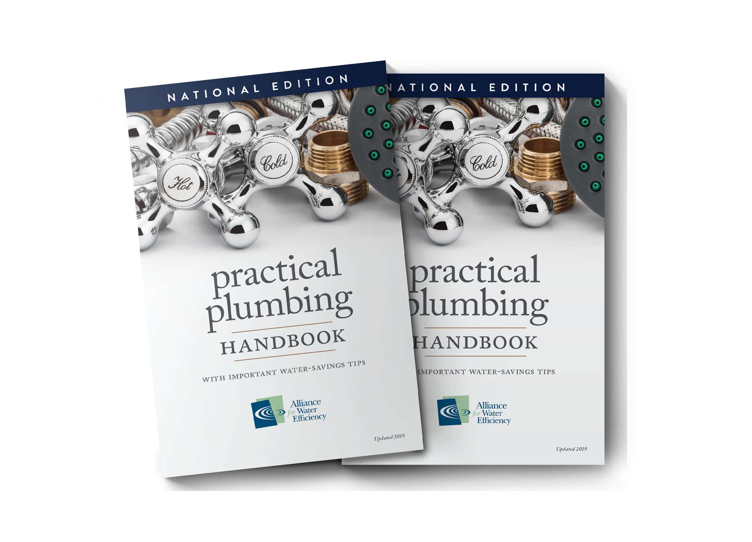In August 2012, the Alliance for Water Efficiency (AWE) and The Johnson Foundation at Wingspread co-hosted a summit with water utility managers, rate experts, price regulators, economists, and advocacy groups to explore the issues surrounding declining water sales, utility revenue losses, and the impact on conservation programs. Prior to the summit, a white paper was developed to frame the discussion. Following the summit, the white paper was finalized with comments from the participants.
The Problem
In increasingly more regions across the United States, maintaining long-term water supply reliability has become an important concern. Partly due to successful water conservation programs, improved water-saving fixtures and technology, and a number of other factors, both water sales and water-related revenues are falling on a national level. With sales and revenues declining, how can water utilities cover costs of water treatment and delivery? How can they cover the rising costs of infrastructure repair and replacement? Most importantly, how can they meet these costs while still encouraging much-needed conservation efforts?
This daunting phenomenon – dubbed the “conservation conundrum” – provided the backdrop and framing for the Declining Water Sales and Utility Revenues summit.
The Summit
AWE successfully convened this summit of water rates experts at The Johnson Foundation at Wingspread on August 29-31, 2012. Twenty-five industry experts participated, along with five observers. The experts included rate setters, economists, regulators, utility executives, and advocates. The conversation was wide-ranging and productive.
To prepare the attendees for the summit, Dr. Janice Beecher of Michigan State University’s Institute of Public Utilities and Dr. Thomas Chesnutt of A&N Technical Services prepared a framing paper and the Alliance for Water Efficiency hosted a webinar a week before the event. Subsequent to the summit, Drs. Beecher and Chesnutt incorporated elements of the discussion into a White Paper that was distributed to the participants, which will be the basis for subsequent working groups on the topic and presentations at professional meetings. This work was made possible by funding from The Walton Family Foundation.
The summit itself entailed seven elements. It began with opening presentations that framed the conversation as one that far transcended economics alone, introducing political, regulatory, social, and communication context as well. It then addressed five different discussion topics:
- How and why are water sales declining?
- Are water utility revenues falling short of revenue requirements?
- Do water utilities and the conservation community have a messaging problem?
- What methods are available to repair revenues and improve fiscal stability?
- What role do industry standards, practices, and policy reforms play?
It concluded with a summary discussion of ways in which the thinking of the experts had shifted as a result of the summit conversation.
Summary Discussion:
- General Comments
- Forecasting and Rate Design
- Political Observations
- Communicating and Messaging
- New Ideas
- Needed Research
The White Paper
The white paper was drafted initially to frame the central issues in advance of the August 30, 2012 summit at Wingspread to examine the root causes of the current problems with water utility rates and revenues, and to outline potential utility solutions as well as policy and regulatory reforms. The paper was finalized following the summit and presents a framework for defining the problem, and exploring both root causes and potential utility and policy solutions. The paper is organized around the the five issue areas presented above, and ends with concluding thoughts and a list of selected readings.






